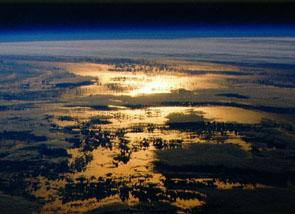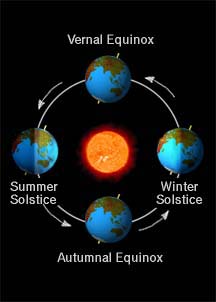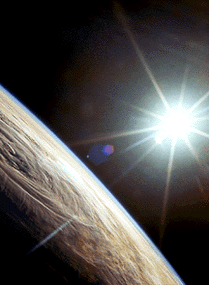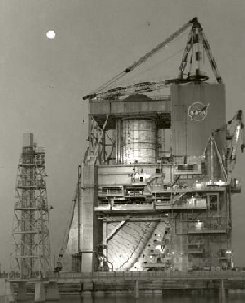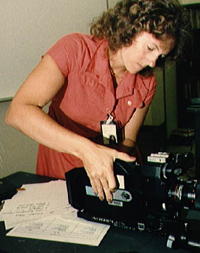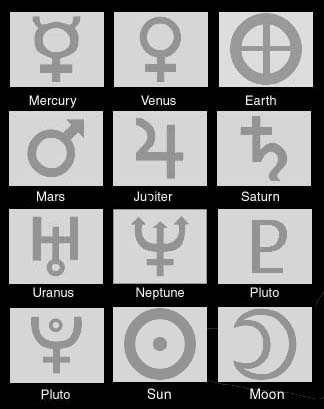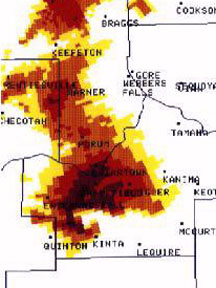Click on image for full size
Courtesy of NASA
What is the distance from the Earth to the Sun when the Earth is at perihelion and when it is at aphelion? At what month is the Earth closest to the Sun? What is the circumference of the Earth? How fast is the Earth moving about its axis; how about around the Sun?
If a body (like the Earth) is orbiting around the Sun, we say it is closest to the Sun at perihelion and farthest from the Sun at aphelion. In 2000, perihelion for the Earth was on January 3, 2000, and aphelion was on July 4, 2000. The Earth was 91,405,436 miles from Sun at perihelion and 94,511,989 miles from Sun at aphelion. For the year 2001, perihelion will occur on January 3rd and aphelion will occur on July 4th. The actual date for perihelion and aphelion will differ from year to year. Most importantly though, you can see that the Earth is closest to the Sun in January and farthest from the Sun in July!
This may not seem right. I mean it's winter in the northern hemisphere in January when we are closest to the Sun. Shouldn't it be warmest then because we are closer? Actually, our seasons are determined by the tilt of the Earth and not by how close the Earth is to the Sun.
A few more numbers for you...the circumference of the Earth is 24,901.55 miles (40,075.16 km) at the equator. If you were to measure from the north pole to the south pole and back to the north pole, the circumference would be a bit shorter. That is because the Earth bulges a little bit around its waist (the equator). This "equatorial bulge" is caused by the Earth's spin - try spinning a water balloon as you toss it up into the air to see how this works. Tidal forces caused by the pull of gravity from the Sun and Moon also add a little to this bulge. So the pole to pole circumference is 24,859.82 miles (40,008 km).
Finally, the gravitational pull between the Earth and Sun causes the Earth to travel around, or "orbit", the Sun at a velocity of 29.8 km/sec. At the same time, the Earth also turns on its axis causing the daily cycle of day and night. This "rotational velocity" is approximately .47 km/sec. That means that at the same time we're hurtling through space at nearly 67,000 mph, we're also spinning around in circles at over 1000 mph! Whew! Almost makes you dizzy, doesn't it?
Submitted by Leslie (Missouri, USA),
Wayne (New York, USA), Terry (Michigan, USA), Kristi (Toronto, Canada),
Wykeenie (Louisiana, USA), Tommy (Pennsylvania, USA)
(November 7, 2000)


